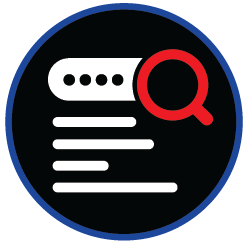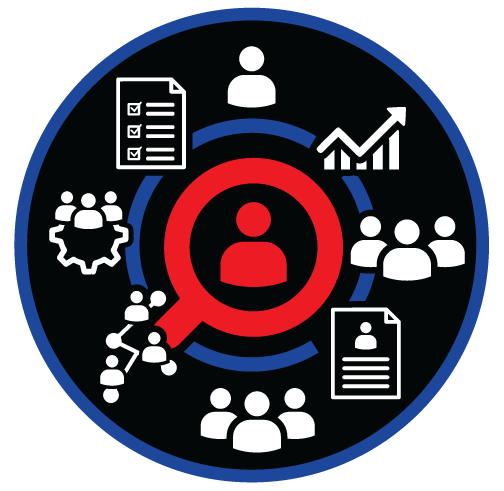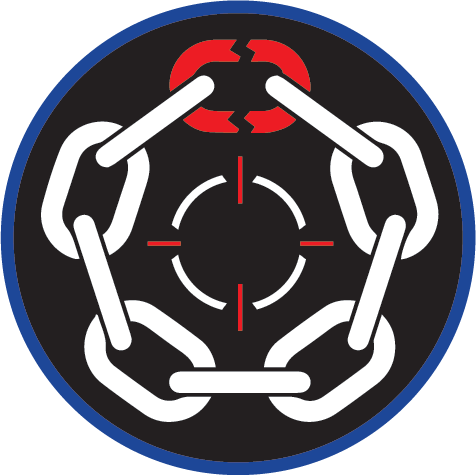
Advanced Search
Actionable Intelligence: Advanced Search for ThreatNG Insights
The Advanced Search capability within ThreatNG's Assess module empowers security professionals to conduct granular investigations of discovery and assessment results. This feature lets users quickly pinpoint specific vendors, technologies, vulnerabilities, or any other data point that ThreatNG collects. Analysts can efficiently extract actionable intelligence, identify critical risk patterns using this facility, and comprehensively understand their organization's external attack surface.
Uncover Critical Insights: Leveraging Advanced Search Across ThreatNG
ThreatNG's Advanced Search capability provides significant advantages across various security functions, empowering security professionals to gain deeper insights, accelerate investigations, and improve their overall security posture. By enabling granular querying and analysis of ThreatNG's comprehensive data, Advanced Search streamlines critical workflows in external attack surface management, digital risk protection, security ratings, and more.

Granular Asset Discovery Analysis: Advanced Search allows security teams to investigate discovered assets (e.g., subdomains, IPs, open ports) to pinpoint specific vulnerabilities or misconfigurations contributing to the external attack surface. This enables a more precise understanding of where weaknesses lie.
Efficient Attack Vector Identification: By filtering and correlating data, analysts can use Advanced Search to quickly identify potential attack vectors, such as exposed APIs, vulnerable web applications, or misconfigured cloud services. This speeds up the process of hardening defenses.
Proactive Security Posture Improvement: Advanced Search facilitates the identification of positive security indicators (e.g., WAFs, MFA) alongside vulnerabilities. This comprehensive view allows organizations to improve their overall security posture strategically.
Rapid Digital Threat Detection: Security teams can use Advanced Search to quickly find and analyze digital risks, such as brand impersonations, phishing campaigns, or data leaks on the dark web. This enables faster response and mitigation.
Contextualized Risk Assessment: Advanced Search provides context to digital risk findings by correlating them with other data, such as sentiment, financials, and domain intelligence. This helps prioritize the most critical risks.
Proactive Brand Protection: Analysts can use Advanced Search to monitor and investigate brand mentions, social media activity, and other online presence indicators to detect and address potential brand damage.
Enhanced Rating Transparency: Advanced Search allows users to drill down into the data contributing to security ratings, providing a clearer understanding of the factors influencing the score. This fosters trust and enables targeted improvement efforts.
Focused Remediation: By identifying specific vulnerabilities and misconfigurations through Advanced Search, organizations can prioritize remediation efforts to improve their security ratings most effectively.
Continuous Improvement Tracking: Advanced Search enables the tracking of security posture changes over time, allowing organizations to monitor the impact of their security initiatives on their ratings.

Brand Protection
Proactive Brand Monitoring: Advanced Search allows security professionals to actively monitor for brand mentions, impersonations, and other potential threats across the external attack surface.
Rapid Threat Triage: Advanced Search enables quick identification and assessment of the severity and scope of brand-related threats, allowing for efficient prioritization and response.
Comprehensive Brand Exposure Analysis: By correlating various data points, including technology stack, domain intelligence, and code exposure, Advanced Search provides a holistic view of an organization's brand exposure and potential vulnerabilities.
Cloud & SaaS Exposure Management
Granular Visibility into Cloud Risks: Advanced Search allows security teams to pinpoint specific misconfigurations, exposed data, or unauthorized services within their cloud and SaaS environments.
Efficient Risk Prioritization: Analysts can quickly identify and prioritize the most critical risks for remediation by filtering and sorting cloud and SaaS exposure data.
Streamlined Compliance: Advanced Search facilitates the identification of cloud and SaaS assets and associated risks, streamlining compliance efforts and reporting.
Due Diligence
Comprehensive Security Assessment: Advanced Search allows organizations to conduct thorough security assessments of potential acquisition targets by examining their external attack surface, digital risks, and security posture.
Efficient Risk Identification: The ability to quickly filter and analyze security data enables organizations to identify and evaluate critical security risks associated with the target company.
Informed Decision-Making: Advanced Search supports informed decision-making during the due diligence process by providing a detailed understanding of the target's security landscape.
Third-Party Risk Management
In-Depth Vendor Analysis: Advanced Search enables security teams to thoroughly investigate the security posture of third-party vendors by analyzing their technologies, vulnerabilities, and potential exposures.
Efficient Risk Identification: Using Advanced Search to filter and correlate vendor-related data, analysts can quickly identify high-risk vendors and prioritize them for further assessment or mitigation actions.
Continuous Monitoring Support: Advanced Search helps monitor vendor security by enabling ongoing analysis of their external attack surface and potential changes in their risk profile.
Frequently Asked Questions
-
The Advanced Search capability is a critical component of ThreatNG because it empowers security professionals to move beyond surface-level analysis and conduct in-depth investigations of their external attack surface, digital risks, and security posture. It provides the ability to quickly and precisely find specific information within the vast amount of data that ThreatNG collects and assesses. This is crucial for efficient risk assessment, threat hunting, incident response, and proactive security management.
-
ThreatNG's Advanced Search allows users to pinpoint information related to specific vendors and technologies across various data sets. For example:
External Attack Surface Management: You can search for all assets (e.g., subdomains, servers) associated with a particular vendor's web server technology to identify potential vulnerabilities or misconfigurations.
Third-Party Risk Management: Security teams can use Advanced Search to find all vendors in their supply chain that use a specific technology known to have vulnerabilities, helping them prioritize vendor risk assessments.
Cloud and SaaS Exposure: You can search for cloud services provided by a specific vendor (e.g., AWS, Azure, Google Cloud) to identify potential misconfigurations or data exposures.
Vulnerability Management: Advanced Search can help you locate all systems using a specific technology with known vulnerabilities, allowing for targeted patching and remediation.
-
The Advanced Search capability is most useful in the following scenarios:
Incident Response: When investigating a security incident, analysts can use Advanced Search to quickly identify affected systems, vendors, or technologies and trace the attack's origin and scope.
Proactive Threat Hunting: Security teams can proactively search for known vulnerabilities or misconfigurations related to specific vendors or technologies to identify potential threats before they are exploited.
Risk Assessments: When conducting risk assessments, analysts can use Advanced Search to gather information about specific vendors, technologies, or assets to evaluate their risk posture.
Compliance Audits: Advanced Search can help in compliance audits by providing the ability to quickly locate systems or data that fall under specific compliance requirements.
Ongoing Security Management: The capability is valuable for continuous security monitoring and analysis, enabling security teams to stay informed about their organization's evolving risk landscape.




















